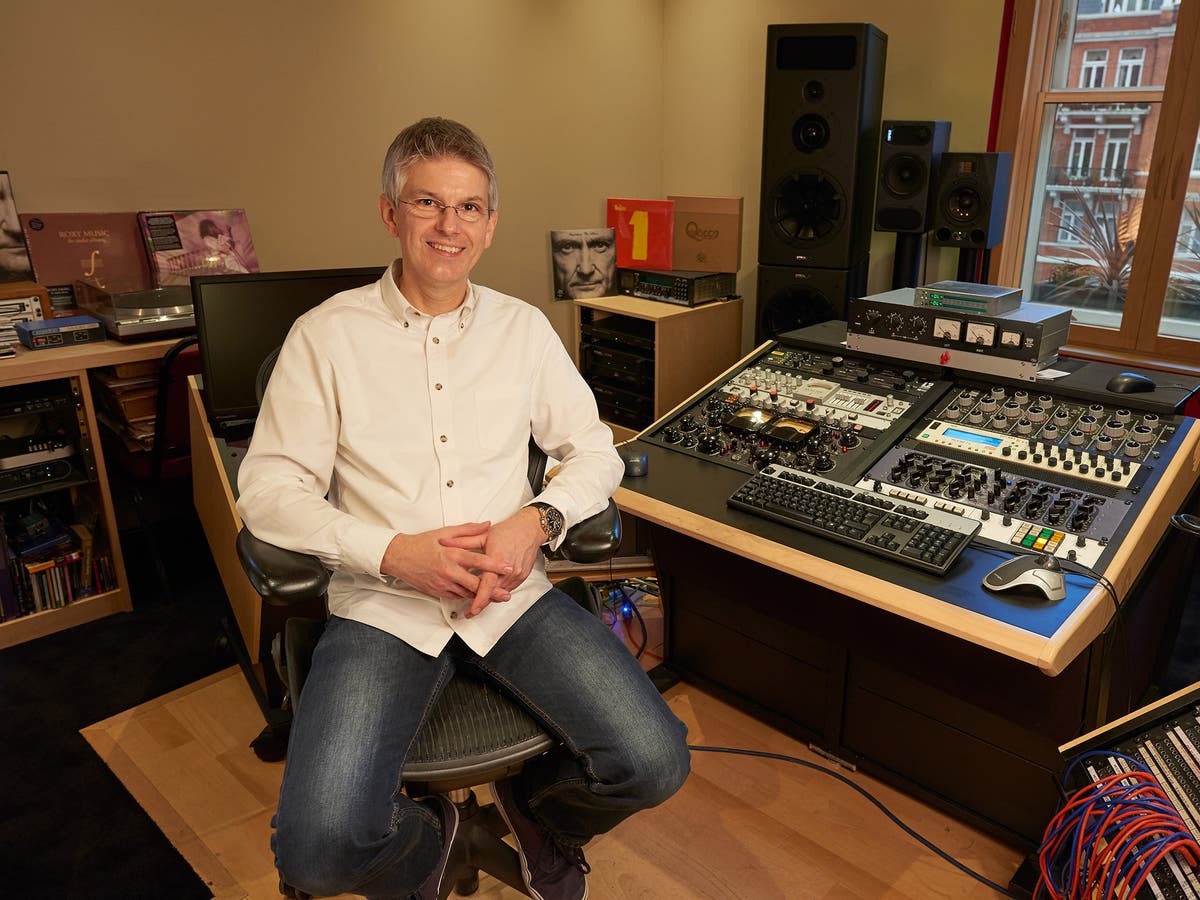Classic albums are given new life at Abbey Road Studios with a ‘half-speed’ vinyl treatment | The Independent
From 78 rpm records to CDs and MP3s, popular music has undergone countless revolutions. Today, acoustic experts claim that the way to perfect sound reproduction is through vinyl albums produced at the “half speed” of 16 2/3 RPM.
Six classic albums, including the Rolling Stones Exile on the main streetwere cut for release at Abbey Road Studios in London using half-speed mastering, a process that promises to bring a new level of depth and clarity to recordings.
An artisanal process in the age of digital music reproduction, requiring the artisan use of a lathe, the discs were mastered by Miles Showell, one of the world’s leading exponents of half-speed slicing.
The 180g vinyl albums, which are expected to sell for £32, will play at the standard 33 RPM. But they promise to deliver “superior high-frequency (treble) response and very solid, stable stereo images”, which will relay every Keith Richards lick and Mick Jagger scream, as the band intended in 1972.
The process involves the original master tape being played at 16 2/3 RPM, exactly half its recorded speed, while the slitter is similarly spun at half the desired playback speed.
Vinyl requests: six of the best
The Rolling Stones – Exile on Main Street Sprawling double album incorporating blues, country and gospel influences. Cut from 24bit/96khz digital transfers and made from the original ¼” tapes.
The Police – Ghost in the Machine Multi-platinum album from 1981. Taken from a high-resolution digital transfer of the most famous ¼” analog tape in existence.
John Martyn – Solid Air Breakthrough and relaxing jazz-folk album from 1973. Cut from high resolution digital transfer from the original ¼” analog masters
Cream – Disraeli Gears 1967 psychedelic masterpiece from the supergroup led by Eric Clapton and Ginger Baker. Cut from digital transfers made from the original ¼” mono masters.
Free – Fire and Water Paul Rodgers’ blues-rockers’ third album features the smash hit All Right Now. Cut from digital transfers from the original ¼” tapes.
Simple Minds – New Golden Dream Scintillating synths on the Scottish rockers’ breakthrough 1982 record. Cut from hi-res digital transfer from original ½” analogue masters.
This gives the cutter head twice the time to carve the intricate groove in the main lacquer, providing considerably more precision on vital sonic issues such as “extreme frequencies and microdynamic contrasts”.
Using a modified Neumann VMS-80 lathe, described as the best cutting lathe on the market, Showell is able to cut through difficult high-frequency information at mid-range. The result is a drive capable of “extremely clean, unforced high frequency response”. Because the source and cut were running at half their “normal” speed, everything plays at the correct speed when the disc is played back home.
“It takes forever, more than four times longer than breaking a normal record,” Showell said. “It brings crisp, clear sound with much better stereo separation and attention to detail than previous versions.”
Only audiophiles will benefit from this, however. “You won’t get much benefit from a cheap £80 turntable, but a decent £200 turntable should make the difference,” he said.
Enjoy unlimited access to 70 million ad-free songs and podcasts with Amazon Music Sign up now for a 30 day free trial
The biggest challenge with half-speed cutting is “de-essing”, a form of signal processing by which the vocalist’s “s ss” and “t” sounds are controlled in order to avoid hiss and distortion. During the lecture.
“A lot of records are just broken on autopilot by robots in a factory,” said Showell, an award-winning engineer who applied the half-speed technique to the Beatles and Queen catalogs.
New releases include Simple Minds’ 1982 album New golden dream. “It’s a long album, 25 minutes per side, which makes it harder to cut to a good level because you’re running out of room on the record to put it all in,” Showell said. He is particularly pleased with the results of his work on John Martyn’s Air solida 1973 folk-jazz classic. “Sounds good,” he said.
Other releases from the Universal Music catalog will follow, and Showell said he hopes it might encourage a generation accustomed to listening to heavily compressed MP3 tracks through inexpensive headphones to sample wider sonic horizons.


Comments are closed.